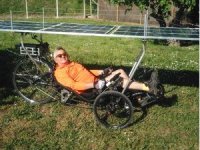cycleops612
10 kW
Perhaps to clarify?
Generally, multi input controllers are hardly a new concept.
A green home may have a wind generator and PVs, both very different power and both combining to charge the same bank, managed by a single controller.
Similarly, many ebike controllers can charge a battery from a charger input, or from a regen input. It is a multi input controller, but not usually thought of as such.
Therefore, Maybe the PVs could be fed into that second input, in lieu of regen power from the motor?
Generally, multi input controllers are hardly a new concept.
A green home may have a wind generator and PVs, both very different power and both combining to charge the same bank, managed by a single controller.
Similarly, many ebike controllers can charge a battery from a charger input, or from a regen input. It is a multi input controller, but not usually thought of as such.
Therefore, Maybe the PVs could be fed into that second input, in lieu of regen power from the motor?


